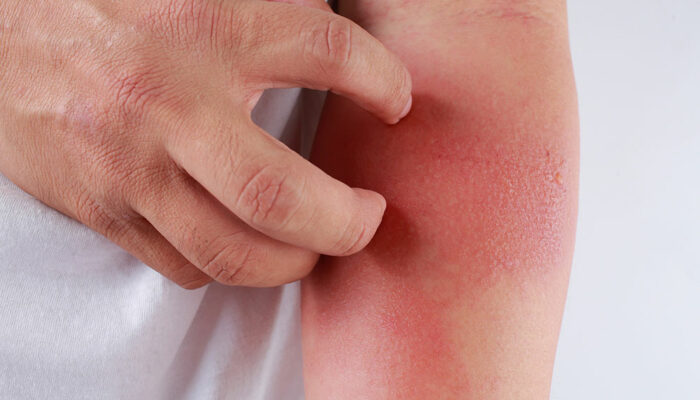
Common Symptoms and Triggers of Food Allergies in Dogs
Food allergies in dogs occur when they eat something that their immune system mistakenly believes to be harmful. This causes an adverse reaction in the body. Unlike humans, dogs can develop food allergies over time. So, even if your dog wasn’t allergic to a particular food in the past, constant exposure to it can develop into an allergy. It is essential to identify the symptoms and triggers of food allergies in dogs so that the right treatment can be provided.
Just like humans, different dogs can be sensitive to different food items. Sometimes, the symptoms can be simply due to food intolerance and not an allergy. A dog is said to be intolerant to a particular food when its digestive system is unable to process the food properly. In this case, you’ll probably notice just the gastrointestinal symptoms. If your dog has allergies, then stomach issues may accompany skin problems, and at times, even behavioral issues.
1. Symptoms of food allergies in dogs
Some of the common symptoms of food allergies in dogs are:
- Chronic ear infections
Chronic ear infections are the number-one sign of food allergies in dogs. These infections can be identified by a sticky, yeast-like secretion in the ear. Your pet might be consistently shaking its head or pawing at its ear too. However, it’s best to rule out a yeast infection or ear mites by applying over-the-counter medications on it first. If the condition doesn’t improve, then the dog can be checked for a possible food allergy. - Skin inflammation
Hives, bumps, and inflammation on the skin are common symptoms of food allergies in dogs. Your dog might be constantly in pain due to this inflammation. However, environmental allergens, too, cause skin problems. So it is best to rule them out first. - Redness and bronzing
Redness around the lips, jowls, nail beds, and toes is another tell-tale sign of food allergies in dogs. This symptom is even more noticeable in dogs with white coats. Apart from redness, there might also be scale-like crusting on the skin. - Itchiness
Excessive itching, especially around the head, neck, anal glands, and between the toes, is another sign of food allergy in dogs. This can also lead to poor fur health, as your dog might pull out tufts of fur while scratching themselves. You might also notice your dog rubbing against walls, furniture, floors, etc., to relieve its itch. - Watery eyes
Another symptom—which is common to both food and environmental allergies in dogs—is the eyes tearing up. If your pet constantly scratches the area around its eyes and you notice some droopiness and discharge, then you should immediately take them to the vet and rule out any signs of an infection or allergy. Sometimes, the tear ducts get clogged, causing excess tear production as well. - Gastrointestinal symptoms
Some of the common gastrointestinal symptoms seen in dogs suffering from food allergies include bloating and excessive flatulence, vomiting, diarrhea, bloody stools, abdominal pain, and nausea. - Behavioral symptoms
Food allergies can also cause behavioral symptoms, such as a lack of interest in daily activities; excessive grooming; constant biting of the paws, toes, etc.; lethargy; frequent itching; and refusal to eat meals; among others.
2. Triggers of food allergies in dogs
Only after you identify the symptoms and triggers of food allergies in dogs can any treatment option be suggested. If you know which food is most likely to cause a problem, then you can take preventive measures against it and remove it from your pet’s diet. Dogs can be allergic to any food, but the most common triggers include beef, chicken and poultry-based products, lamb, fish, and pork. Many dogs are also allergic to gluten derived from wheat, corn, and rice. Legumes, such as soybeans, peas, and peanuts, are also known sources of allergies in dogs. In addition, dairy products, such as milk and cheese, also serve as common allergens in dogs.
If you notice these symptoms in your dog, then chances are, it might be suffering from a food allergy. Try excluding one or more of the allergens listed above from your pet’s diet. If the allergy doesn’t subside, then visit a veterinarian. At the clinic, tests are conducted to find the source of the allergy. The vet might even prescribe an elimination diet to find the cause of your dog’s allergies.



